Indonesia's wild buffalo races
-
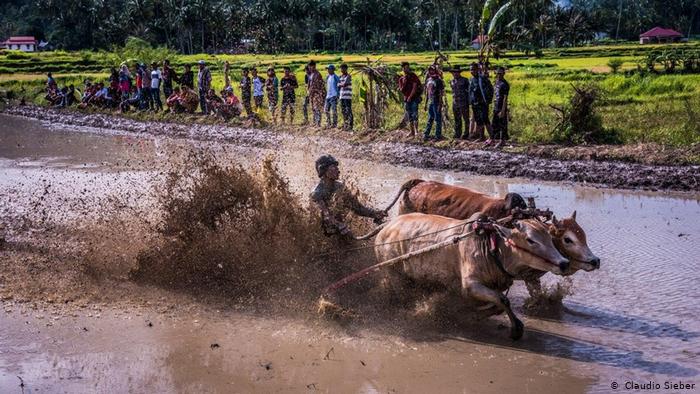
Bull-surfing on Sumatra: when the rice harvest on Sumatra is finished, the farmers of the region compete in the "Pacu Jawi" (bull race). A freshly harvested rice field serves as a race track -
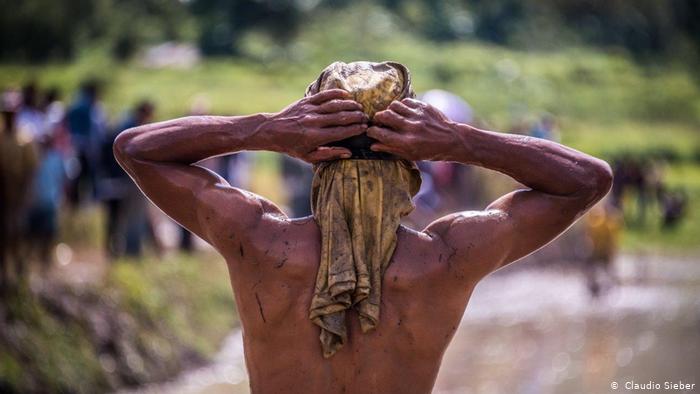
Local hero: the "jockeys" are all farmers from the Tanah Datar district in West Sumatra. The race has no deeper religious or spiritual meaning. It is all about fun and challenge -
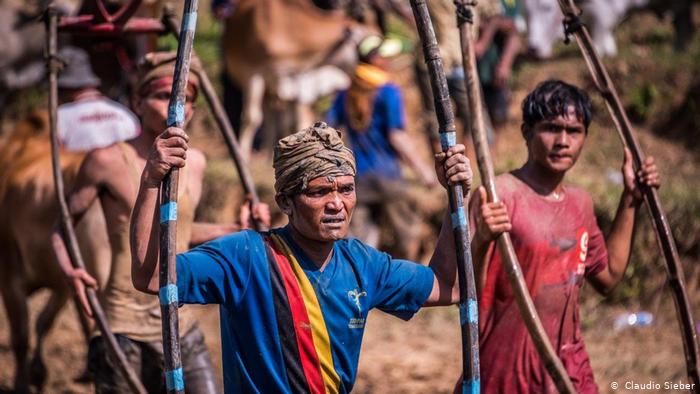
The race harness: the daring jockeys do not need more than two simple harnesses to which a wobbly board is attached. During the race they hold on to the tail of the bulls -
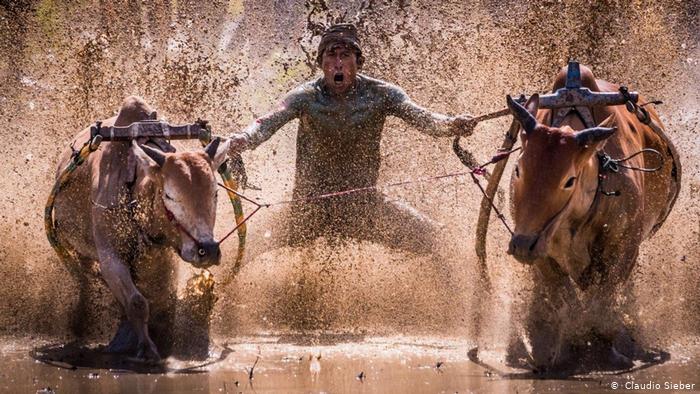
Just make sure you stay together! In the "Pacu Jawi", it is all about speed and staying on the track. The teams reach 30 to 40 kilometres per hour. Since there is neither a stopwatch nor exact rules, the organising committee has to improvise -
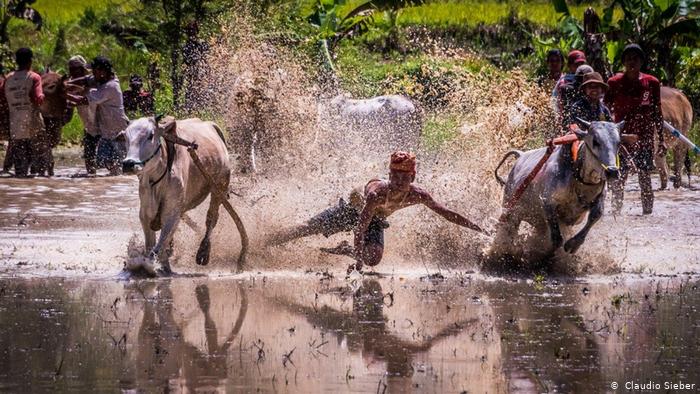
Mud bath: falls and mud baths are an integral part of the race. Even for experienced jockeys it is not easy to keep the bulls on course -
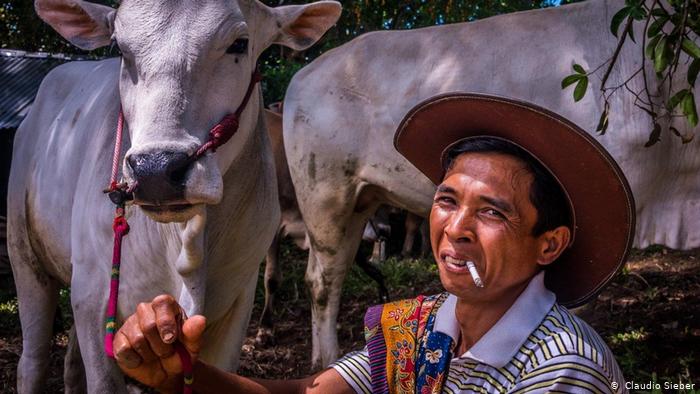
Winning duo: the farmers take very good care of their animals. Some swear by secret recipes: they mix duck eggs and a little honey into the fresh grass food for stamina. Although there is no prize money, it pays to win. A winning bull achieves about twice the price at the cattle market -
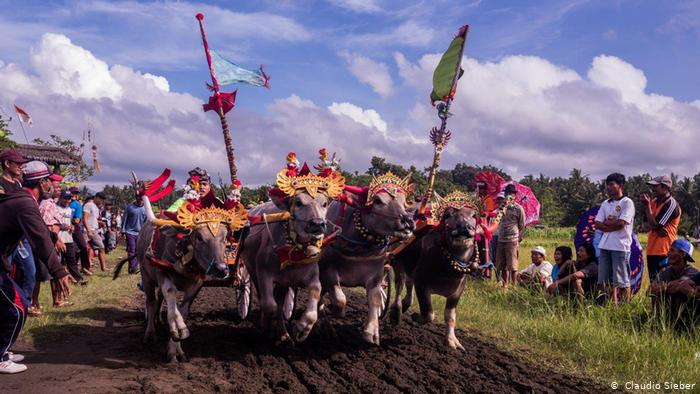
Buffalo race in Bali: every year the "Jembrana Cup" is held on the island of Bali. The racing season here also begins with the end of the rice harvest. There are different qualification races. The winners of the qualifying races then compete in the "Makepung Final" for about 1400 Euro prize money -
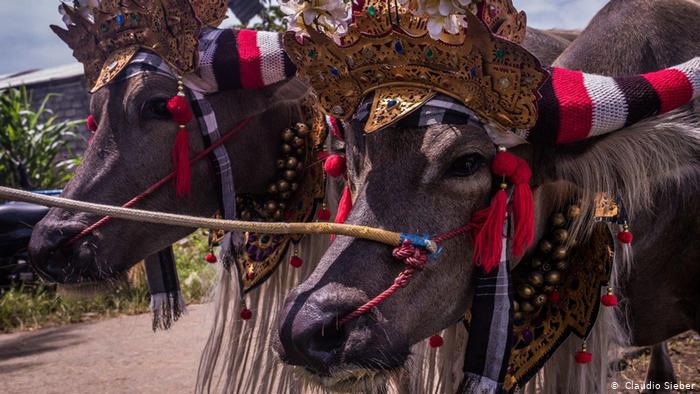
Jewels: the farmers decorate their racing bulls with elaborate headdresses -

Chariots: the drivers stand on small chariots called "Cikar". The race track is about three kilometres long -
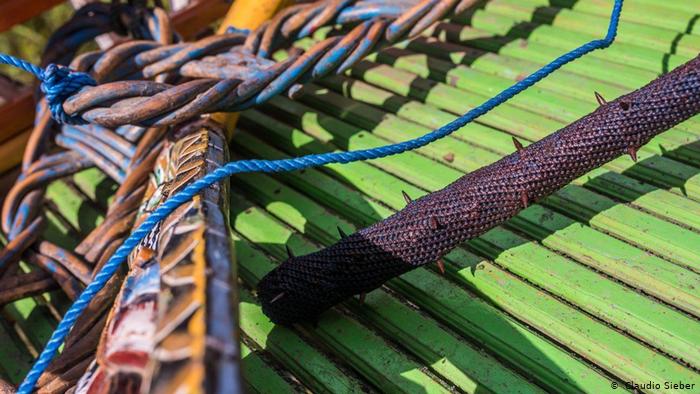
Spiked club: in order to drive the bulls to maximum performance, the drivers beat their flanks and backs with spiked clubs. A bloody business, but one that rarely leads to serious injuries -

Red against green: the red and the green teams share a long tradition. The Reds live on the east side of the Gading River, the Greens on the west side. They've been competing for the cup since the 1960s -
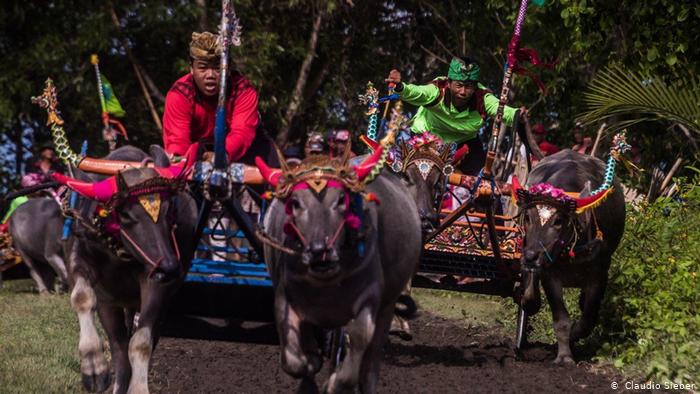
Catch up: the opponents always compete in pairs. But not side by side, but one after the other. The pursuer wins if he can reduce the distance to the person in front to less than ten metres
https://qantara.de./en/node/20936
Link
To all image galleries
